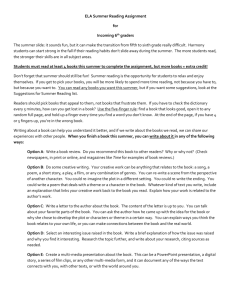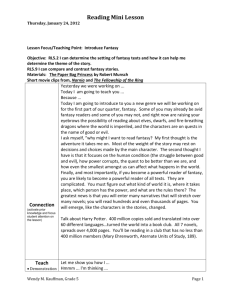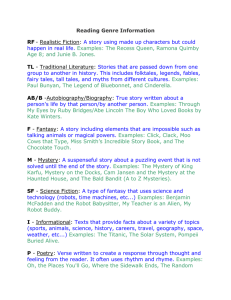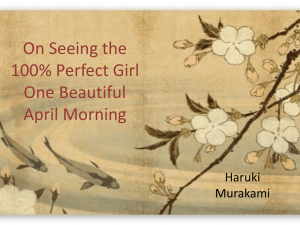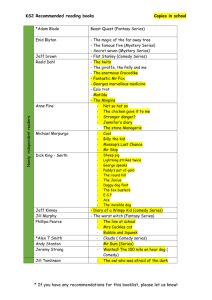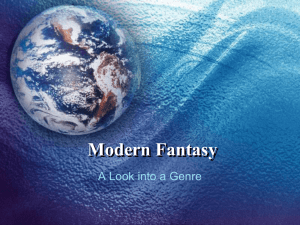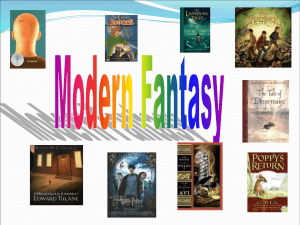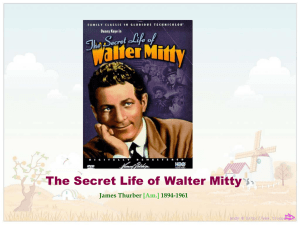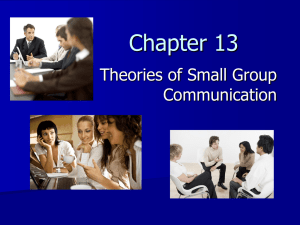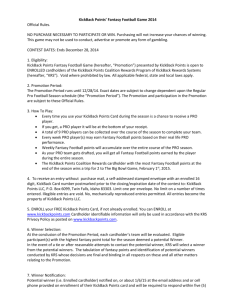Fantasy Sub
advertisement
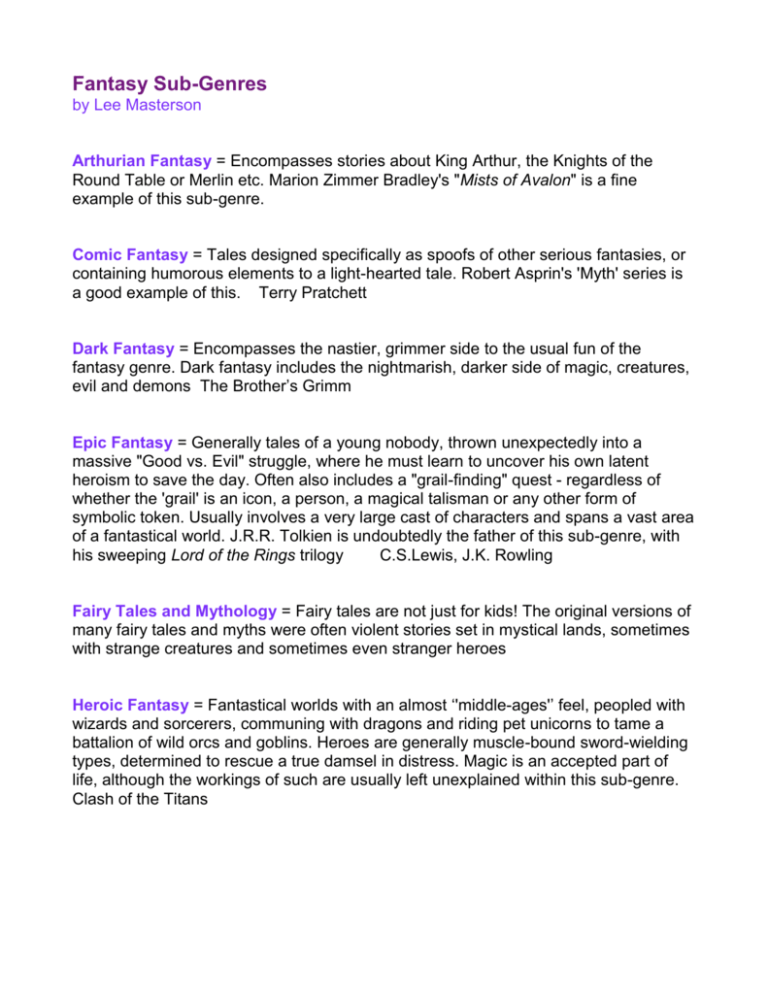
Fantasy Sub-Genres by Lee Masterson Arthurian Fantasy = Encompasses stories about King Arthur, the Knights of the Round Table or Merlin etc. Marion Zimmer Bradley's "Mists of Avalon" is a fine example of this sub-genre. Comic Fantasy = Tales designed specifically as spoofs of other serious fantasies, or containing humorous elements to a light-hearted tale. Robert Asprin's 'Myth' series is a good example of this. Terry Pratchett Dark Fantasy = Encompasses the nastier, grimmer side to the usual fun of the fantasy genre. Dark fantasy includes the nightmarish, darker side of magic, creatures, evil and demons The Brother’s Grimm Epic Fantasy = Generally tales of a young nobody, thrown unexpectedly into a massive "Good vs. Evil" struggle, where he must learn to uncover his own latent heroism to save the day. Often also includes a "grail-finding" quest - regardless of whether the 'grail' is an icon, a person, a magical talisman or any other form of symbolic token. Usually involves a very large cast of characters and spans a vast area of a fantastical world. J.R.R. Tolkien is undoubtedly the father of this sub-genre, with his sweeping Lord of the Rings trilogy C.S.Lewis, J.K. Rowling Fairy Tales and Mythology = Fairy tales are not just for kids! The original versions of many fairy tales and myths were often violent stories set in mystical lands, sometimes with strange creatures and sometimes even stranger heroes Heroic Fantasy = Fantastical worlds with an almost ‘'middle-ages'’ feel, peopled with wizards and sorcerers, communing with dragons and riding pet unicorns to tame a battalion of wild orcs and goblins. Heroes are generally muscle-bound sword-wielding types, determined to rescue a true damsel in distress. Magic is an accepted part of life, although the workings of such are usually left unexplained within this sub-genre. Clash of the Titans High Fantasy = High Fantasy is the type of fantasy that most people expect when they regard ‘'fantasy'’ as a genre. Includes lords and ladies, medieval styles and settings, kingdoms and castles, and dragons and knights. High fantasy, while generally rooted in classical mythology and medieval European legends, focuses its themes on Good versus Evil. Sometimes called "Epic fantasy". Often plotted to encompass three or more books. David Eddings Magic Realism = Stories where magic is an accepted part of the system and of the culture. There must always be consequences to the use of magic, or involve some form of 'prop' to get the magic working, like an amulet, potion, talisman or incantation. Australian author, Ian Irvine, manages to combine several fantasy sub-genres into his massive four book series "The View From the Mirror". Most notably, though, his use of 'magic realism' and the nasty consequences that come from its use give his characters an extra dimension that makes the series truly worth reading. Modern Fantasy = Tales of magic and wonder set in modern times Sword and Sorcery = Good old-fashioned 'Sword & Sworcery'. Rollicking tales of high adventure in almost medieval settings. Designed to follow the exploits of the 'hero' as he battles to overcome all the bad guys by use of his trusty sword and some really huge muscles. Robert E. Howard brought about the rise in popularity of this subgenre with his creation of 'Conan: The Barbarian' Masterson, Lee. http://www.fictionfactor.com/articles/fsubgenre.html
